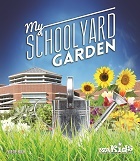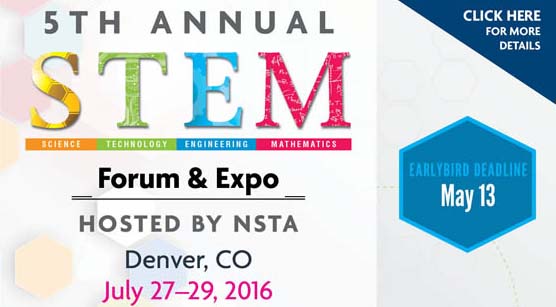Attending a conference?
By Mary Bigelow
Posted on 2016-04-25
 We are excited about attending an NSTA conference next year (it would be our first conference). The school has professional development funds to cover some of the expenses, but we have to write a proposal describing what we hope to learn from it. Any suggestions on what to include? We’ve never been to an event like this, and we want to get the most out of it. Do you have any suggestions for a conference first-timer? —E. and M., Virginia
We are excited about attending an NSTA conference next year (it would be our first conference). The school has professional development funds to cover some of the expenses, but we have to write a proposal describing what we hope to learn from it. Any suggestions on what to include? We’ve never been to an event like this, and we want to get the most out of it. Do you have any suggestions for a conference first-timer? —E. and M., Virginia
Attending professional events such as the NSTA national conference in the spring and the area ones in the fall is a wonderful professional development activity. Many of the sessions are hands-on, demonstrating strategies and procedures you can use in your classroom. The opportunity to hear scientists describe their research in person is extraordinary. In the exhibit hall, you can visit major textbook publishers along with vendors of lab equipment, supplies, professional development programs, and other teaching materials. Agencies such as the National Oceanic and Atmospheric Administration (NOAA), NASA, and U.S. Geological Survey have excellent (and free) materials to bring back. There are numerous sessions related to the Next Generation Science Standards, and events geared specifically toward elementary and middle school teachers, as well as other specialties. You can meet NSTA officers, staff, and book authors. Making connections with teachers from around the world is a priceless experience.
See the related blog for 2016 conference first-timers with many suggestions on what to expect at an NSTA conference.
Check with your district to see if there is a format for your proposal. In my district, like yours, teachers who wanted to attend conferences had to submit a mini-proposal that included
- our professional goals for attending the conference
- what topics we were interested in learning more about
- a strategy for sharing information with the rest of the teachers when we returned
During the conference we were expected to keep a log of our activities and expenses. After the conference, we had to submit a report summarizing our activities and what we learned. It was work, but we understood that because the district was using grant funds, some accountability and documentation was necessary.
Survey other teachers for suggestions of themes for sessions to attend: topics they would like more information about, content their students struggle with, new equipment or materials to investigate and compare. Add these topics (and the fact that these would be helpful to other teachers) to your proposal. The conference schedule is available online in advance, so you can decide together how to split up the sessions to meet your needs and the needs of your department.
In your proposal, indicate how you will share what you’re learning. During the conference, use tools such as Twitter, Facebook, Skype, blogs, or e-mail to update the folks at home. Send pictures of yourself at various sessions and events or even posing with a science education celebrity. Many of the conference presenters upload their handouts and other materials to the NSTA Communities site, so even if you can’t make a session, the materials can be accessible.
Your proposal could also note that you are willing to do a presentation to the faculty about what you learned or lead a discussion or demonstration of a new idea. Turn in session evaluations to have access to a transcript from NSTA that documents your participation and include it in your report. (My supervisor was amazed that we attended sessions on Saturday and Sunday, too).
In case some supervisors think you’ll be on vacation… I’ve been attending educational conferences for more than 25 years, and I have yet to see teachers lounging around. Attendees are usually exhausted (in a good way) from participating in sessions from 8:00 a.m. to 6:00 p.m., browsing the exhibit floor for new ideas and materials, and networking with other educators. And of course before they left home they had to prepare lesson plans for the substitutes. But it’s worth it to come back charged up
Reflecting on the NSTA National Conference Middle School Share-a-thon
By Guest Blogger
Posted on 2016-04-25
OK, I admit it. I’m crazy. Standing in the registration area at 6:45 IN THE MORNING (!) at the NSTA National Conference on Science Education in Nashville, I was handing out postcards (OK, it was more like hawking at a sporting event) advertising the National Middle Level Science Teachers Association’s “Meet Me in The Middle Day” on Saturday. I’m calling out, “Middle school science teachers? Anyone a middle school science teacher?” Some pretended they didn’t hear me (I’m used to that teaching middle schoolers.) and some gave me “that look.” You know it. The “Do I LOOK crazy?” look. Some came right out and said, “I’m not that crazy.” or “Thank goodness I got out of there last year.” The greatest, however, were the people that raised their hands (Yes, actually raised their hand!) and said, “Me! I am!” with a huge smile on their face. My people. The special, caught in the middle people. Middle level—the place that I love with people I enjoy being with (at least most of the time). I feel like a kid in a candy store when it comes to “Meet Me in the Middle” day. I mean, A WHOLE DAY JUST FOR US! Where else can you talk to people that understand your job, meet folks from around the country, compare notes, get some already tested ideas to use on Monday when you’re back at school, and maybe even win a door prize?!?! (I’m not that lucky.)
Probably my absolute favorite part of the day is the Share-a-thon that happens in the afternoon. I love walking up and down the aisles (more than once, I admit) full of lessons, ideas, and freebies (I love freebies!). Everywhere I looked people were smiling and having a good time. Hands and bags were carrying ‘treasures’ they had found. People were doing labs, playing games, learning about a different way to present a concept. (Did you know you can make a cloud in a 2-litre bottle using a bicycle pump, a stopper and some rubbing alcohol? Or how about putting UV sensitive beads bags, rubbing different brands of sunscreen on the bags, exposing the bags to light and then relating it to wearing sunscreen and skin cancer? Or learning about contests that can be part of I/E time, Genius Hour or differentiation in the classroom? Or the authentic ways to combine ELA and science? How about a classroom you can collaborate with?) You get the idea. I could go on and on but I know you have assignments to check.
You can be a part of this. It’s happening in Los Angeles at the NSTA conference next year. You have an idea to share (Really, you do!) and you will walk away with new friends and new ideas to use in your classroom. And you’ll know that middle school teacher crazy is the best kind of crazy there is to be.
Author Peggy Perdue is on the board of directors of the National Middle Level Science Teachers Association
Join today and receive Science Scope, the peer-reviewed journal just for middle school teachers; connect on the middle level science teaching list (members can sign up on the list server); or consider joining your peers for Meet Me in the Middle Day (MMITM) at the National Conference on Science Education in Los Angeles in the spring of 2017.
The mission of NSTA is to promote excellence and innovation in science teaching and learning for all.
Future NSTA Conferences
5th Annual STEM Forum & Expo, hosted by NSTA
- Denver, Colorado: July 27–29
2017 Area Conferences
- Baltimore, Maryland: October 5–7
- Milwaukee, Wisconsin: November 9–11
- New Orleans, Louisiana: November 30–December 2
National Conferences
- Los Angeles, California: March 30–April 2, 2017
- Atlanta, Georgia: March 15–18, 2018
- St. Louis, Missouri: April 11–14, 2019
- Boston, Massachusetts: March 26–29, 2020
- Chicago, Illinois: April 8–11, 2021
2016 and 2017 NGSS Workshops
Follow NSTA
Career of the Month: Medical Scientist
By sstuckey
Posted on 2016-04-25
Based on Interviews With Professionals Using Science in the Workplace
Medical scientists conduct laboratory experiments to try to find answers to difficult medical problems while also applying their knowledge to treat patients in a clinical setting. Brian Brooks is an ophthalmologist who specializes in vision problems associated with coloboma and albinism. He is chief of the Unit of Genetic and Developmental Eye Disease at the National Eye Institute, which is part of the National Institutes of Health (NIH) in Bethesda, Maryland.
Work Overview
I do lab work to understand how children and adults go blind and determine how to treat their eye diseases. Coloboma is a rare disorder that can cause children to have keyhole-shaped pupils and that can block signals from the retina and optic nerve to the brain and cause blindness. We don’t know why it occurs or if it can be prevented. To look for underlying genetic causes for the disease, we examine patients and their first-degree relatives and sequence their genes. Everyone has mutations, or “misspellings” in their genetic code. We try to separate the disease-causing misspellings from the benign ones that we all carry.
It’s difficult to figure out cause and effect. If our research team can locate a genetic misspelling, we can try to predict whether it is harmful to that gene. We know we’re on the right track if we start to see the same pattern in more than one unrelated family. We also look at the effects of changing the genetics of mice and zebrafish. Mice are mammals like us, and their genetics are particularly well understood, whereas zebrafish develop very fast, and their eyes are transparent when they are young. So we use the fish to test our hypotheses, to see which ones are worth further testing in mice or in a cell culture. The work involves a lot of data crunching.
I’m also researching potential treatments for albinism, a condition that leads to abnormalities in vision development due to reduced melanin. If the condition can be identified at birth and treated, it might improve the person’s vision. We first looked at drugs used to treat other conditions. We then tested a drug called NTBC that might interact with the body’s melanin-production pathway in mice with albinism and also in cell cultures. It corrected some features of albinism in the mice. Now, we have permission to conduct a pilot study in five adults with this particular type of albinism to see whether it affects their melanin levels.
Career Highlights
I went to the White House to receive a Presidential Early Career Award in Science and Engineering a few years ago. Another highlight was receiving tenure at the National Eye Institute.
Career Path
I started in electrical engineering at the University of Maryland, but I also took several biology and chemistry courses. I soon realized that I was more interested in using engineering as a tool in biology and switched my major to biochemistry.
What I found most appealing was the intersection of science and medicine, so I went on to get a combined MD and PhD degree. I decided to specialize in ophthalmology, a field with many unanswered questions. Blindness exists in many forms, and for many of them there are no good treatments.
I did my residency in ophthalmology with a subspecialty in pediatric ophthalmology at the University of Michigan. Then I got a fellowship to work on medical genetics at the NIH. When the fellowship ended, I stayed on as a staff member at the NIH.
Knowledge, Skills, and Training Needed
You should be inquisitive, because you have to combine elements from different areas of science and engineering to accomplish goals. Be patient, because not all hypotheses lead to results. Also, become good at writing and public speaking, because if you can’t communicate your findings effectively, your work will be hard to understand.
Advice for Students
The only thing that will keep you going is a love for science and medicine. It’s very helpful to take basic science, computer science, and some engineering courses. Also try to get some lab experience. Every step of the way, work on your ability to communicate your understanding of science to others, either by taking writing classes or by taking science classes that require writing or giving presentations.
Bonus Points
Brooks’s education:
BS in biochemistry from the University of Maryland; MD and PhD in biochemistry from the University of Pennsylvania.
On the web:
http://irp.nih.gov/pi/brian-brooks
Related occupations:
Optometrist, orthoptist, nurse, genetic counselor, biologist, and lab technician.
Editor’s Note
This article was originally published in the April/May 2016 issue of The Science Teacher journal from the National Science Teachers Association (NSTA).
Get Involved With NSTA!
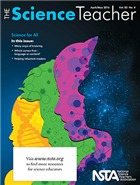 Join NSTA today and receive The Science Teacher, the peer-reviewed journal just for high school teachers; to write for the journal, see our Author Guidelines and Call for Papers; connect on the high school level science teaching list (members can sign up on the list server); or consider joining your peers at future NSTA conferences.
Join NSTA today and receive The Science Teacher, the peer-reviewed journal just for high school teachers; to write for the journal, see our Author Guidelines and Call for Papers; connect on the high school level science teaching list (members can sign up on the list server); or consider joining your peers at future NSTA conferences.
The mission of NSTA is to promote excellence and innovation in science teaching and learning for all.
Future NSTA Conferences
5th Annual STEM Forum & Expo, hosted by NSTA
- Denver, Colorado: July 27–29
2017
Area Conferences
- Baltimore, Maryland: October 5–7
- Milwaukee, Wisconsin: November 9–11
- New Orleans, Louisiana: November 30–December 2
National Conferences
- Los Angeles, California: March 30–April 2, 2017
- Atlanta, Georgia: March 15–18, 2018
- St. Louis, Missouri: April 11–14, 2019
- Boston, Massachusetts: March 26–29, 2020
- Chicago, Illinois: April 8–11, 2021
Follow NSTA
Meeting with others about early childhood STEM education–at a conference, at the White House
By Peggy Ashbrook
Posted on 2016-04-24
The powerful learning that comes of getting together with others who are interested in the same topic can lead to action that increases opportunities for all children to engage in science and engineering explorations. Let’s not leave out using technology and mathematics since these areas of learning are so intertwined with the S and E that they are often referred to as “STEM” learning. Hearing about the work of others also lifts my spirits when I’m feeling that early childhood science education could be so much more effective and widespread than it is.
I had the opportunity to attend two such gatherings with education professionals who have been in the classroom and field much longer than I have: the National Science Teachers Association’s 2016 national conference March 31-April 3, and the White House Early Learning STEM Symposium, held on April 21 in partnership with the U. S. Department of Education, U. S. Department of Health and Human Services and Invest In US.

![]()
![]()
![]()
The White House Early Learning STEM Symposium partners include Invest in US (organized by the First Five Years fund), the Heising-Simons Foundation and the National Association for the Education of Young Children. The National Science Teachers Association was represented by President Dr. Carolyn Hayes. As Roberto Rodriquez Deputy Assistant to the President for Education said, the administration’s challenge to the country is a “collective call to action to strengthen and support STEM early learning.”
Secretary of Education, John B. King, noted that spending on early childhood education has an 8:1 return on the investment in terms of better long term academic, health, and success in the workforce outcomes. He charged the participants to begin in early childhood to close achievement gaps in education that will help close the diversity gaps the STEM fields by being laser focused on our highest need students and what’s happening in their early learning classrooms.King also spoke about talking with children, noting that they remembered early learning STEM experiences as learning opportunities and joyful experiences: “This work on early learning STEM experiences is not just about ensuring a strong academic foundation; it’s about the joy that comes in learning about, and coming to understand, how the world worked.”
Watch his full speech and the panel discussion on “What Does the Research Say About Early STEM?” in the video of the White House Early Learning STEM Symposium.
[youtube]https://www.youtube.com/watch?v=iUvEks2tutw[/youtube]
The national NSTA conference in Nashville had so many sessions that I wanted to attend that I could not get to them all. So I turned to the session schedule to see if any of those I could not attend had posted handouts to give me a bit of information about what I missed.
(Note: if you attended sessions, please help presenters by giving feedback through evaluating the sessions. Go to the conference schedule, search for the sessions you attended and click on the evaluation button at the bottom of each session description.)
I searched for keyword “preschool” because that is the younger end of early childhood education. Then I scrolled through the list to look for any attached handouts. Some of the sessions that come up in that search are listed as for a “General” audience, not always appropriate for preK-grade 2, but still have interesting handouts. I also searched for Kindergarten, because those sessions are less likely to be listed as “General.” Here are two examples of the materials I found:
- Curriculum Examples jpg from Katie Morrison and Deb Chickadel’s Thursday session, Creating a Sticky Curriculum: Integrating Science with Core Academic Subjects in the Preschool and Elementary Classroom.
- Mia Dubosarsky of The STEM Education Center at WPI in Worcester, MA, generously shared materials for her short course, SC-4: Engineering a Story: Integrating Engineering Practices with Literacy. . “Engineering a Story: The integration of engineering practices with literacy” is adapted with permission from Engineering Lens, developed by Bill Wolfson, a wonderful example of how engineers and educators collaborate. The handouts have many examples of engineering design processes, which will help early childhood teachers understand that there is no single process and that engineering design rarely moves in a linear way.
 At the conference I attended an informal meeting of early childhood science educators, including several other members of the NAEYC’s Early Childhood Science Interest Forum. We talked about our individual work and about how to move our communities forward in supporting science education in early childhood settings.
At the conference I attended an informal meeting of early childhood science educators, including several other members of the NAEYC’s Early Childhood Science Interest Forum. We talked about our individual work and about how to move our communities forward in supporting science education in early childhood settings.
Meeting with other early childhood educators from the classroom next door, the child care provider down the street, or a colleague from another program–I am grateful for all the individual and group meetings that enrich my own practice.
The powerful learning that comes of getting together with others who are interested in the same topic can lead to action that increases opportunities for all children to engage in science and engineering explorations. Let’s not leave out using technology and mathematics since these areas of learning are so intertwined with the S and E that they are often referred to as “STEM” learning. Hearing about the work of others also lifts my spirits when I’m feeling that early childhood science education could be so much more effective and widespread than it is.
Teach Your Students To Be Good Stewards of the Environment
By Carole Hayward
Posted on 2016-04-24
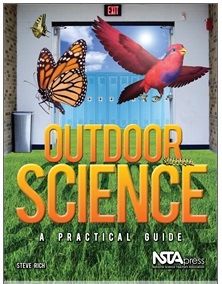
Outdoor Science: A Practical Guide
Whatever your school’s setting—urban, suburban, or rural—you can create stimulating outdoor classrooms for your grades 3-8 students, with a little help from Outdoor Science.
Nonmember Price: $25.95
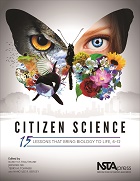
Member Price: $25.56
Nonmember Price: $31.95
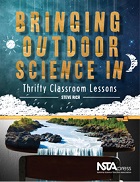 Bringing Outdoor Science In: Thrifty Classroom Lessons
Bringing Outdoor Science In: Thrifty Classroom LessonsThis helpful guide contains more than 50 science lessons in six units for grades K-8: Greening the School, Insects, Plants, Rocks and Soils, Water, and In the Sky.
Member Price: $20.76
Nonmember Price: $25.95
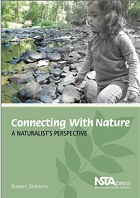
Member Price: $7.95
Nonmember Price: $7.95
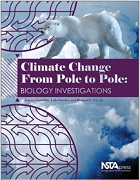
The biology-based case studies in this unique resource provide an authentic and rigorous way to engage students in grades 9-12 in science and environmental issues.
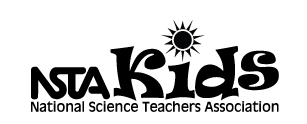
This book takes young readers on a journey that starts with dense tropical rainforests and woodlands, travels through grassy savannas and prairies, and ends at dry steppes and deserts.
Member Price: $9.56
Nonmember Price: $11.95
Uncover Your Students’ Ideas in Earth and Environmental Science
By Carole Hayward
Posted on 2016-04-22
 The newest book in the NSTA Press best-selling Uncovering Student Ideas in Science series is here!
The newest book in the NSTA Press best-selling Uncovering Student Ideas in Science series is here!
Uncovering Student Ideas in Earth and Environmental Science by Page Keeley and Laura Tucker offers 32 formative assessment probes to get your students digging deep into environmental science concepts.
Find out what your students think and what they misunderstand with these fun and thought-provoking probes.
This is the 10th book in the Uncovering Student Ideas series, and the first one that targets environmental science. Like the other books, this one is designed to help reveal places where students are getting lost.
The book will help to “uncover preconceptions students bring to their learning, as well as identify misunderstandings students develop during instruction that may go unnoticed by teachers,” Keeley and Tucker write.
How do the probes do this? Each probe includes ideas, myths, or bad information that students might believe and one carefully-researched correct answer. Through the process of working through each probe, students will work through any misconceptions they might have.
Intended for students in grades 3–12, the book covers land, water, weather, climate, Earth history, erosion, plate tectonics, natural resources, pollution, and human impact.
In the book’s first lesson, “What’s Beneath Us?” five friends dig in the garden and ponder what the Earth would be like 10 miles below them. Each friend posits a theory of what they would find if they keep digging.
What is down there? Solid rock with a very thin layer of soil on top? Mostly big rocks, small stones, and gravel with a layer of soil on top? Mostly soil with scattered rocks? Big rocks with a little soil on top and in-between? Repeating layers of soil and rock?
The student is asked to decide which of the five gardeners has the best idea. In the teachers’ notes are tips for administering the probe and suggestions for instruction and assessment. These classroom-tested probes relate to core ideas from the American Association for the Advancement of Science’s Benchmarks for Science Literacy and the National Research Council’s A Framework for K–12 Science Education.
The tools are easy to use and effective for instruction. Give one a try. Check out this free chapter, “Groundwater“.
This book is also available as an e-book.
Follow NSTA
Here's Why You Should Attend the 2016 STEM Forum and Expo
By Guest Blogger
Posted on 2016-04-20
As Chair of the 5th Annual STEM Forum & Expo, I invite STEM educators to join me and NSTA in Denver, Colorado from July 27-29, 2016, for a unique PD event that brings together many of the top STEM organizations and makes the teaching of science, technology, engineering, and mathematics (STEM) a priority in today’s classrooms.
 As the need for students to become stronger in STEM grows, so too does the need for well-qualified STEM teachers and administrators who understand what is needed to develop relevant and high-quality STEM programs. The STEM Forum offers opportunities for those involved in the teaching of STEM programs to learn how to effectively integrate various instructional approaches into their teaching and learning environments.
As the need for students to become stronger in STEM grows, so too does the need for well-qualified STEM teachers and administrators who understand what is needed to develop relevant and high-quality STEM programs. The STEM Forum offers opportunities for those involved in the teaching of STEM programs to learn how to effectively integrate various instructional approaches into their teaching and learning environments.
The Forum’s programming is built to assist with the implementation of initiatives and programs that provide specific professional development programs, strategies, and models that will enhance the skills and knowledge of current and future STEM teachers and school leaders in pre-kindergarten through the university level.
Grade-based strands, as well as a strand specifically geared toward administrators, will enable you to easily follow your own interests and interact with colleagues from your particular teaching communities.
The ultimate goal of the Forum is to positively impact overall student performance in the STEM disciplines at all levels of education. Here are some examples of the type of programming opportunities that you will experience:
- Hands-on sessions that enhance ongoing development of teachers and school leaders to improve their STEM knowledge, as well as their pedagogical skills used to import the specialized knowledge/content in each of the STEM disciplines.
- Specialized panels that promote the implementation of teacher and administrator skill and competency development, including data-informed teaching and leading, and the integration of research-based methods into the STEM curriculum.
- Networking opportunities for administrators to improve and enhance competencies attributable to strong STEM leadership, including, but not limited to, supervising and motivating staff, coordination of STEM curriculum, promoting and sustaining a positive school learning climate, and evaluating student performance in the STEM disciplines.
- The forum provides project- and research-based activities that tackle issues of real-world relevance. Our programming is driven by the latest research in subject areas as well as best practices for communicating topics in effective and meaningful ways.
Additional events that will be offered during this 2 1/2 day Forum are:
- An opportunity to hear perspectives from a diverse group of student panelists who have benefited from STEM education and can explain how it has affected their school experiences. These students will also be sharing their aspirations and interests related to STEM opportunities and careers.
- Exhibits that provide tools and resources to further enhance the skills of education.
- Keynote speaker and creator of the YouTube channel Veritasium Derek Muller, Australian-Canadian science communicator, filmmaker, and television presenter.
The programming and events associated with the 5th Annual STEM Forum & Expo will help to ensure successful implementation of STEM education into schools and communities. I hope you and your colleagues will join us. To assist you as you work with your administrator to attend the STEM Forum, we’ve provided a justification letter for this important professional development opportunity. Download it and bring it to your principal if you need help justifying why you should receive support to attend!
Jennifer C. Williams is the Chair of the 2016 STEM Forum and Expo and Department Chair Lower School Science | PAEMST 2006; Isidore Newman School, New Orleans, LA. email Williams at JenniferWilliams@Newmanschool.org.
The mission of NSTA is to promote excellence and innovation in science teaching and learning for all.
Future NSTA Conferences
5th Annual STEM Forum & Expo, hosted by NSTA
- Denver, Colorado: July 27–29
2017 Area Conferences
- Baltimore, Maryland: October 5–7
- Milwaukee, Wisconsin: November 9–11
- New Orleans, Louisiana: November 30–December 2
National Conferences
- Los Angeles, California: March 30–April 2, 2017
- Atlanta, Georgia: March 15–18, 2018
- St. Louis, Missouri: April 11–14, 2019
- Boston, Massachusetts: March 26–29, 2020
- Chicago, Illinois: April 8–11, 2021
Follow NSTA




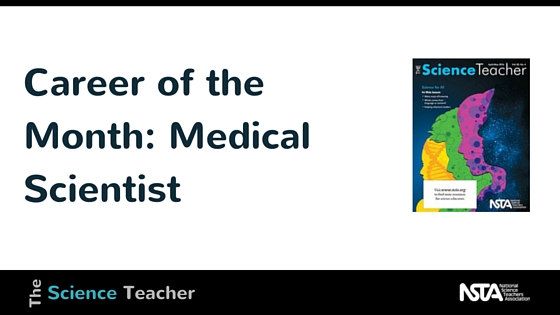


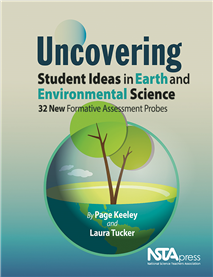
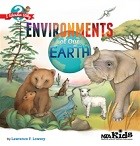
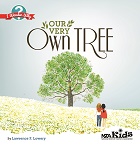
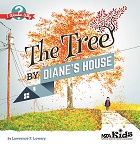

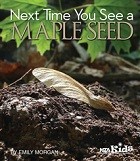 Next Time You See a Maple Seed
Next Time You See a Maple Seed